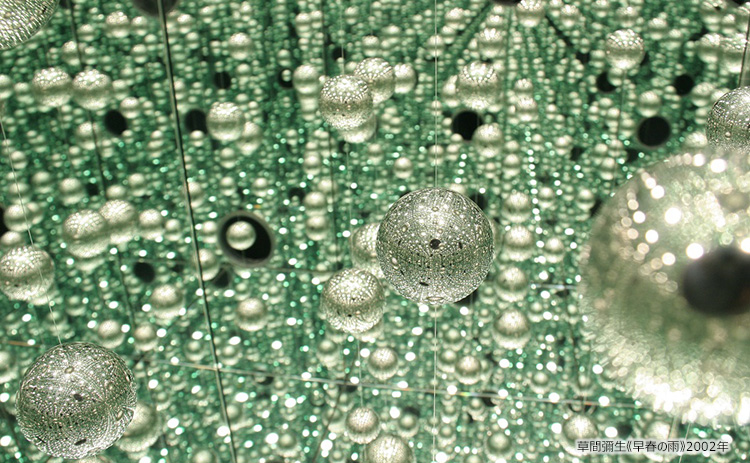A popular hot spring resort blessed with a magnificent natural environment and clear waters from Mt. Aso
Kumamoto Prefecture is located near the center of Japan’s Kyushu region. Home to a Mt. Aso, an active volcano with one of the world’s largest caldera, Kumamoto is often referred to as Hinokuni, the “Land of Fire.” This caldera is located in the Mt. Aso region, which includes five independent peaks: Mt. Nekodake, Mt. Takadake, Mt. Nakadake, Mt. Eboshidake, and Mt. Kishimadake, with Mt. Nakadake being an active volcano. The area is a popular sightseeing destination, offering visitors a close-up view of a crater that actively emits plumes of smoke. The strata formed by eruptions over time have also produced an abundance of clear spring water. Thanks to this, Kumamoto City has become one of only a few cities in the world to use natural groundwater as the source for its entire water supply. For this and other reasons, Kumamoto has become recognized as a treasure trove of water resources, earning it the second nickname Mizunokuni, the “Land of Water.”
Kumamoto Castle—the symbol of Kumamoto Prefecture—is one of Japan’s three most famous castles. The castle was completed in 1607 following seven years of construction initiated by Kato Kiyomasa, the first feudal lord of the Kumamoto Domain. This castle is famous for its unique stone walls, called Musha-gaeshi (warrior repellent) as well as the majestic Honmaru Goten palace and various other sights. Despite being severely damaged in the Kumamoto Earthquake in 2016, restoration work on Kumamoto Castle was completed in 2021, making the castle a symbol of reconstruction. The castle remains a popular sightseeing destination even today.
Thanks to its volcano, Kumamoto is also famous for the many hot springs that burst from the ground throughout the prefecture. Yamaga and Tamana Onsen in the northern part of the prefecture have long been famous as therapeutic hot springs. Aso Uchimaki Onsen in the Aso area is a convenient base for sightseeing around Mt. Aso, while Kurokawa Onsen is a popular hot spring located in a mountain village surrounded by lush greenery. Shimoda Onsen in Kamiamakusa Onsen Village is famous for its beautiful sunset views. In the southern part of the prefecture, visitors can enjoy unique hot springs such as Hinagu Onsen and Hitoyoshi Onsen which are famous for their healing properties.
Thanks to its abundance of groundwater and lush natural environments, Kumamoto produces a variety of delicious agricultural products and has a rich food culture. The prefecture is one of Japan’s leading producers of watermelon, melon, eggplant, and satsuma oranges. Kumamoto is also famous for many specialty products, including basashi (raw horse meat), karashirenkon (lotus root with Japanese mustard), and Kumamoto ramen. Come and enjoy Kumamoto’s various culinary delights!
Read more
Hide
Kumamoto Prefecture is located near the center of Japan’s Kyushu region. Home to a Mt. Aso, an active volcano with one of the world’s largest caldera, Kumamoto is often referred to as Hinokuni, the “Land of Fire.” This caldera is located in the Mt. Aso region, which includes five independent peaks: Mt. Nekodake, Mt. Takadake, Mt. Nakadake, Mt. Eboshidake, and Mt. Kishimadake, with Mt. Nakadake being an active volcano. The area is a popular sightseeing destination, offering visitors a close-up view of a crater that actively emits plumes of smoke. The strata formed by eruptions over time have also produced an abundance of clear spring water. Thanks to this, Kumamoto City has become one of only a few cities in the world to use natural groundwater as the source for its entire water supply. For this and other reasons, Kumamoto has become recognized as a treasure trove of water resources, earning it the second nickname Mizunokuni, the “Land of Water.”
Kumamoto Castle—the symbol of Kumamoto Prefecture—is one of Japan’s three most famous castles. The castle was completed in 1607 following seven years of construction initiated by Kato Kiyomasa, the first feudal lord of the Kumamoto Domain. This castle is famous for its unique stone walls, called Musha-gaeshi (warrior repellent) as well as the majestic Honmaru Goten palace and various other sights. Despite being severely damaged in the Kumamoto Earthquake in 2016, restoration work on Kumamoto Castle was completed in 2021, making the castle a symbol of reconstruction. The castle remains a popular sightseeing destination even today.
Thanks to its volcano, Kumamoto is also famous for the many hot springs that burst from the ground throughout the prefecture. Yamaga and Tamana Onsen in the northern part of the prefecture have long been famous as therapeutic hot springs. Aso Uchimaki Onsen in the Aso area is a convenient base for sightseeing around Mt. Aso, while Kurokawa Onsen is a popular hot spring located in a mountain village surrounded by lush greenery. Shimoda Onsen in Kamiamakusa Onsen Village is famous for its beautiful sunset views. In the southern part of the prefecture, visitors can enjoy unique hot springs such as Hinagu Onsen and Hitoyoshi Onsen which are famous for their healing properties.
Thanks to its abundance of groundwater and lush natural environments, Kumamoto produces a variety of delicious agricultural products and has a rich food culture. The prefecture is one of Japan’s leading producers of watermelon, melon, eggplant, and satsuma oranges. Kumamoto is also famous for many specialty products, including basashi (raw horse meat), karashirenkon (lotus root with Japanese mustard), and Kumamoto ramen. Come and enjoy Kumamoto’s various culinary delights!
















